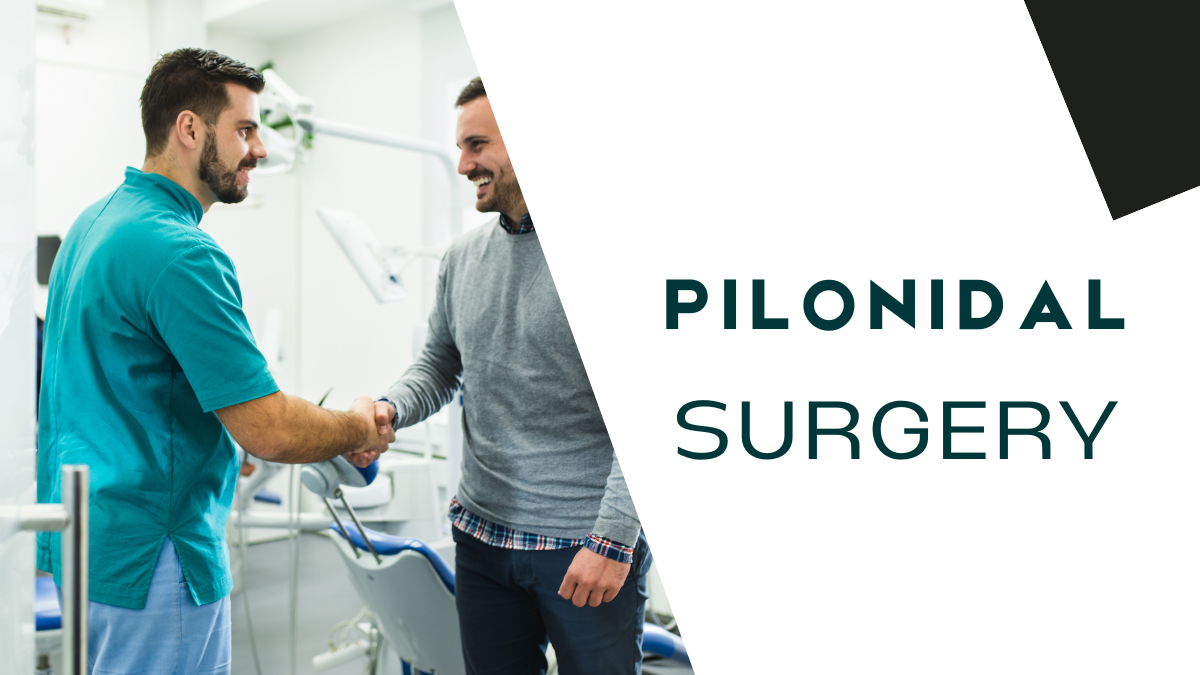A pilonidal cyst develops in the natal cleft. It starts when the body hair fails to puncture the skin layer and gets trapped within the hair follicle. The cyst gradually increases in size and begins to accumulate skin debris. For some, the pilonidal cyst may be asymptomatic. But if infection begins to breed, the cyst oozes up and gets extremely painful. The high recurrence rate makes the cyst into a chronic, suppurative condition known as pilonidal disease. For such cases, pilonidal surgery is the most propagated treatment method. Let’s understand why surgical removal is the best approach:
What Is Pilonidal Disease?
In its most severe form, a pilonidal cyst can be extremely painful. It is a debilitating condition that leads to discomfort and limits movement in routine activities. A colorectal surgeon recommends a pilonidal cyst removal surgery to remove the cyst with the surrounding infective skin tissue.
The pilonidal disease has almost 70,000 cases reported each year in the United States. However, healthcare professionals feel that there are many more that go unreported due to the awkward location of the cyst between the clefts of the buttocks. The ones who go on for medical advice typically experience extreme pain and a range of other symptoms that require symptomatic intervention.
Pilonidal Disease Symptoms
The pilonidal cyst starts as a benign pimple-like growth. But the condition worsens over time with the following symptoms:
Pain – Pain in the buttocks is the primary symptom. The excruciating pain is also the most debilitating symptom of the condition. The pain often worsens while sitting and walking. The area around the tailbone is tender to touch.
Swelling – There is a noticeable lump between the clefts of the buttocks. The surrounding area is red and warm to the touch.
Pus Discharge – Pilonidal cysts that turn infective begin to drain. The pus or the foul-smelling discharge can be accompanied by blood.
Fever – High-grade fever is common in cases of severe infection. Other fever-related symptoms like chills, shivering, body aches, and dizziness are also common.
Pilonidal Disease Treatment
For anyone experiencing moderate to severe levels of pilonidal cyst symptoms, seeking medical help becomes important. Depending upon the extent of infection and the severity of symptoms, the colorectal surgeon may prescribe a treatment plan. The options include:
- Non-Invasive Treatment
- Cyst Removal Surgery
Why Pilonidal Cyst Removal Through Surgery?
Non-invasive treatment methods like prescription antibiotics and self-care methods like drainage, warm compress, and Sitz Bath are typically the first line of treatment. These offer only instant and temporary relief. The pain and other symptoms often return with high intensity during the subsequent episode. Due to the high recurrence rate of pilonidal cysts, the non-invasive treatment options fail to provide permanent and complete relief.
A trained and certified colorectal surgeon thus advocates the need for surgical intervention for the complete elimination of the cyst. Listed below are some proven advantages of surgical removal over and above non-invasive treatment methods:
Comprehensive Treatment Plan – A surgery for pilonidal cyst removal directly targets the underlying cause of the cyst. By removing the entire cyst and the associated sinus tracts, one can look at the complete elimination of the cyst. Once the root cause is appropriately addressed it also reduces the chance of recurrence.
Lowers Recurrence Rate – One of the biggest advantages of surgical removal of the pilonidal cyst is the significant reduction in the risk of relapse. Incision and drainage, a minimally invasive surgery is effective in most cases. On the other hand, chronic cases of pilonidal cysts are best managed by removing the cyst along with the infected skin tissue.
Permanent Relief – The surgical procedure involves removing the infected area and cleaning the entire wound cavity. Depending upon the type of surgery – open wound or closed wound, the wound cavity is packed or sealed with sutures, respectively. This helps provide long-term relief from the painful pilonidal cyst.
Promises Overall Correction – The main cause of relapse of a pilonidal cyst is its awkward location. As the cleft in the buttocks is not airy and generally remains moist, it is the breeding ground for infection. Surgical methods like the Rhomboid Flap Technique fill up the wound cavity with healthy skin taken from a nearby area. After skin grafting the wound opening is closed with sutures. The colorectal surgeon, through his experience and skill, minimizes the depth of the cleft valley. This works as a magic pill for people at high disease risk.
Ensures Faster Recovery – Closed wound surgery for pilonidal cyst removal has a faster healing time as compared to open wound operations. Likewise, it offers a quicker resolution as against repeated non-invasive procedures. Despite inconvenience in the initial phase, the surgical removal of the pilonidal cyst promises long-term relief.
Final Thoughts
The best treatment outcomes for pilonidal disease are often achieved through surgical interventions. The surgery is advised for patients who fall in the high-risk category or are down with hard-to-treat chronic cysts. Needless to say, to ensure the best results for the patient it is of paramount importance that the skill and expertise of the treating surgeon is beyond comparison. Allen Kamrava MD MBA is one of the leading colorectal surgeons in Beverly Hills. He has an impeccable track record of ameliorating the condition of patients with pilonidal cysts. Book an appointment today to understand the best possible treatment option for your case.

